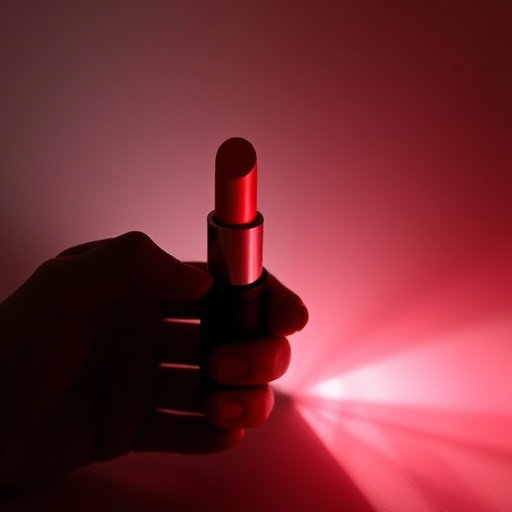Tasers and lipstick stun guns (a compact, integrated design) are non-lethal personal defense tools that differ in mechanism: Tasers use electrical current through probes for muscle disruption over a longer range, while stun guns deliver a stronger jolt directly to disrupt nerve function. Lipstick stun guns with flashlights offer portability and versatility for self-defense, combining lighting with an electric shock. Choice depends on preference, needs, and local laws, as each tool has unique advantages in terms of range, impact, and application.
“In the realm of personal defense, Tasers and stun guns stand out as game changers, offering individuals powerful tools for self-protection. This article delves into the intricate differences between these two devices, specifically exploring the unique features of the Lipstick Stun Gun with Flashlight—a compact yet potent option. We’ll unravel their functionalities, use cases, and key distinctions, guiding you in making an informed choice for your safety needs. By understanding these tools, folks can empower themselves effectively.”
- Understanding Tasers and Stun Guns: A Basic Overview
- Lipstick Stun Gun: Design and Features
- Functionality and Use Cases
- Key Differences Between Tasers and Stun Guns
- Choosing the Right Self-Defense Tool: Considerations
Understanding Tasers and Stun Guns: A Basic Overview
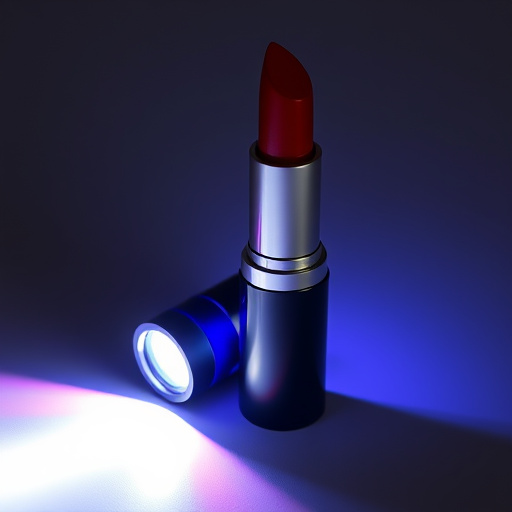
Tasers and stun guns are both non-lethal weapons designed to temporarily incapacitate a person, but they operate on different principles. Tasers, formally known as Conductive Energy Devices (CEDs), use electrical current to disrupt muscular control, causing the target to fall to the ground. They fire two small probes connected to wire leads that deliver a powerful electric shock. In contrast, stun guns, or electronic control devices (ECDs), emit a high-voltage, low-current electrical pulse that overloads the nervous system, leading to muscle spasms and temporary paralysis. Some advanced models, like the lipstick stun gun with flashlight, combine these features with compact designs for easy portability.
While both weapons share the goal of non-lethal force, their effectiveness can vary based on factors such as the device’s power output, the distance between the user and target, and the target’s physical condition. Understanding these differences is crucial when considering which tool might be suitable for self-defense or law enforcement applications.
Lipstick Stun Gun: Design and Features
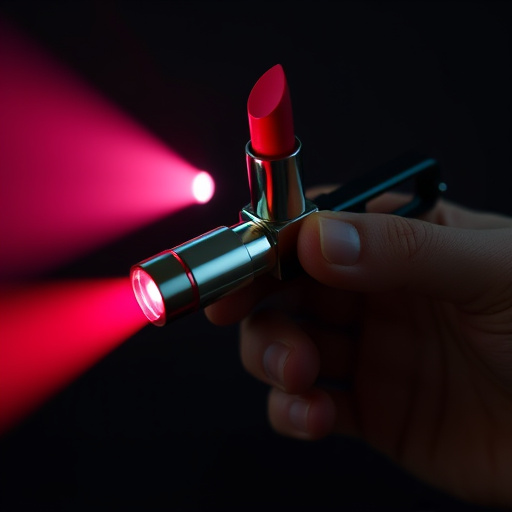
The Lipstick Stun Gun is a compact and innovative self-defense tool designed to fit comfortably in your hand, often resembling a lipstick case, hence its name. This unique stun gun offers a subtle yet powerful way to deter potential attackers, making it an attractive option for personal safety. Its sleek design not only ensures easy carriage but also provides a level of discretion, allowing users to keep it readily available without drawing unnecessary attention.
One notable feature is the integration of a flashlight, combining functionality and convenience. The light can aid in low-light situations, helping users identify their surroundings or signal for help. This dual-purpose aspect adds versatility, making it a practical choice for individuals seeking a reliable self-defense mechanism that seamlessly integrates into their everyday carry items, including makeup bags or purses, thanks to its compact size and stylish appearance.
Functionality and Use Cases
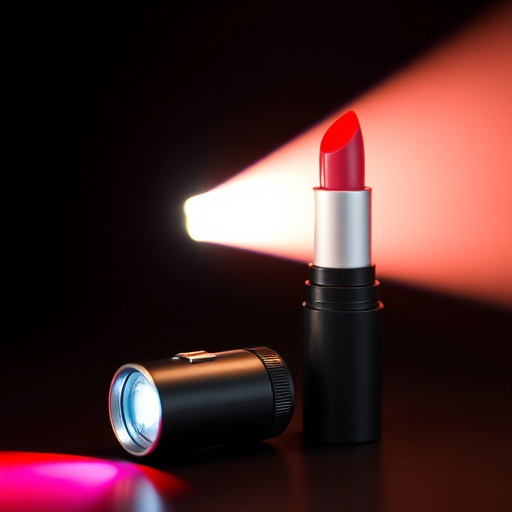
Tasers and stun guns are both non-lethal weapons designed to incapacitate individuals, but they operate on distinct principles and offer unique functionality. A taser fires small probes connected to wires that deliver an electric shock when activated, temporarily paralyzing the target. In contrast, a lipstick stun gun, often featuring a built-in flashlight, uses electrical energy to disrupt muscle control, usually for a shorter duration than a taser.
The use cases for these devices vary. Tasers are commonly employed by law enforcement for crowd control and to subdue resistant or aggressive individuals. Their probes ensure a more targeted and controlled effect. Lipstick stun guns, on the other hand, are popular among personal protection enthusiasts and women’s safety advocates due to their compact size and ease of concealment, similar in form factor to a lipstick case. The flashlight function adds an element of visibility during nighttime encounters or low-light conditions.
Key Differences Between Tasers and Stun Guns
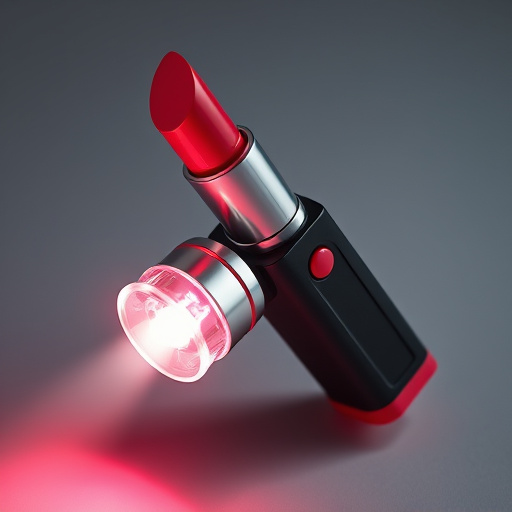
Tasers and stun guns are both non-lethal weapons designed to incapacitate an assailant, but they operate through distinct mechanisms that set them apart. One key difference lies in their method of delivery; tasers use small probes connected to electrical cables to deliver a high-voltage, low-current electric shock, while stun guns emit a powerful, concentrated electric charge directly from the device via a conductive surface.
Another notable distinction is the range and power levels offered. Tasers generally have a longer effective reach, often up to 30 feet, making them more versatile for distance control. Conversely, stun guns typically provide a shorter range but deliver a stronger jolt of electricity, sometimes accompanied by a bright flash and loud noise (like a lipstick stun gun with flashlight). This difference in power and range makes tasers suitable for crowd control and law enforcement scenarios, while stun guns are favored for personal defense against aggressive assailants.
Choosing the Right Self-Defense Tool: Considerations
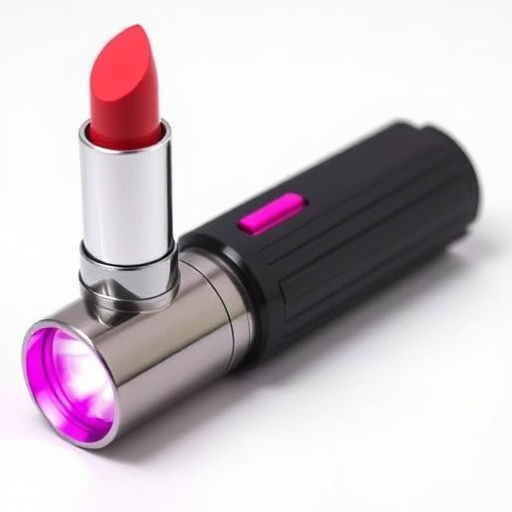
When considering self-defense tools, understanding the unique capabilities of each is key. One popular option is a Taser, designed to temporarily disable an assailant with an electric shock. These devices are known for their non-lethal nature and wide range of effects, from muscle confusion to immobilization. However, they have limitations; they require direct contact or proximity to the target, and factors like weather conditions can impact performance.
On the other hand, stun guns, including lipstick stun guns with flashlights, offer a different approach. They use high-voltage electrical current to cause severe pain and disorientation without necessarily rendering the victim unconscious. Stun guns are generally easier to operate and don’t rely on direct contact, making them more versatile. Features like a built-in flashlight can enhance visibility during low-light situations, adding another layer of security. Ultimately, the choice between a Taser and a stun gun depends on personal preference, specific needs, and understanding local laws regarding self-defense tools.
In comparing Tasers and stun guns, understanding their unique functionalities is key for choosing an effective self-defense tool. While both devices disrupt an assailant’s mobility, Tasers employ electrical current to temporarily paralyze, whereas stun guns use high-voltage, low-amperage pulses to disable. The lipstick stun gun with flashlight stands out as a compact, stylish option, combining discreet protection with a powerful jolt and illuminating beacon. When selecting a self-defense device, consider factors like ease of use, power output, and specific needs, ensuring you’re prepared for any unexpected situation.
